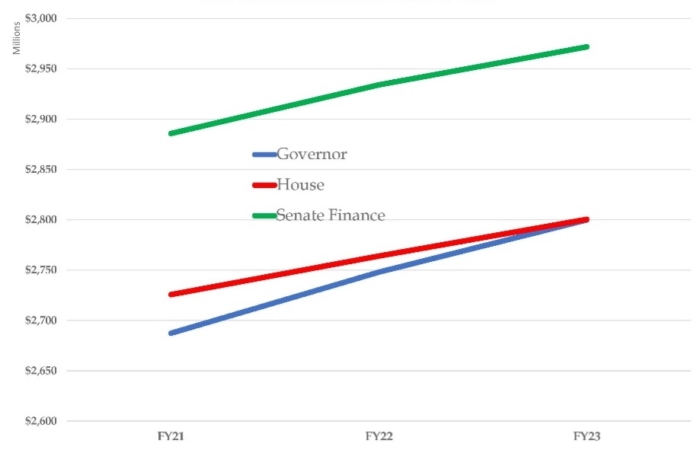How the Senate Finance Committee budget compares to the House budget
The 2022-23 state budget approved by the Senate Finance Committee makes some significant changes from the House version. It lowers overall taxes and spending while preserving several of the House’s policy initiatives, moving some out of the budget, and adding a few new ones. The Senate’s overall two-year state spending package would spend $150 million less in General and Education Funds than the House version, reduce taxes slightly more, and rely on higher revenue projections.
With business tax revenues booming, this has allowed the Senate Ways and Means Committee to count on General and Education Trust Fund revenues of $2.89 billion for the current fiscal year, which runs through June 30. That is $160 million higher than House estimates and nearly $200 million more than Gov. Chris Sununu’s estimate from February. This higher baseline carries over into higher estimates for FY 2022 and 2023 revenues, even though the governor, House, and Senate project revenues to grow at similar modest rates over the next two years. In total, the higher revenues generated in March, April, and May of this year give the Senate more than half a billion in General and Education Trust Fund revenue that their House counterparts did not have earlier this spring. (The above graphic represents the different budget revenue projections.)
Despite several differences, House and Senate budget writers arrived at similar bottom-line spending numbers. The House version of House Bill 1 would spend $13.6 billion in total funds, with $3.46 billion of that in General and Education Trust Funds. The Senate Finance package would spend $13.5 billion total, $3.32 billion from the General and Education Trust Funds.
For more, read our policy brief (pdf): Budget Visions 2022-23- Senate



